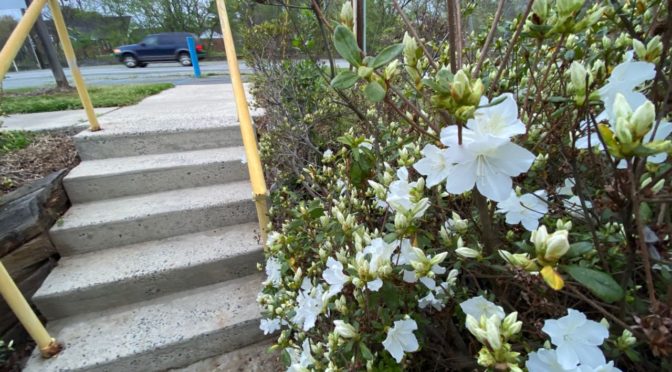A quick recap today of where you can’t hike, where you can hike but maybe shouldn’t, and where you should hike.
Where you can’t hike
Initially, visitor centers, restrooms, camping and cabins were closed. Now, many trails are being closed as well.
Great Smoky Mountains National Park. The entire park, with two small exceptions, closed March 24, and will remain closed at least through April 6.
Appalachian Trail. The Appalachian Trail Conservancy, which oversees the 2,193-mile trail, asks that hikers, whether they’re planning a day hike or a thru hike, avoid the AT. They explain why here. Further, the Cherokee, Nantahala, Pisgah, George Washington and Jefferson national forests have shut down AT access points in their jurisdictions.
Shenandoah National Park. The park is yielding to locally imposed restrictions; in general, it appears most of the access points are closed. Learn the latest on what is and isn’t open here.
North Carolina State Parks. Twenty-seven state parks/recreation areas/natural areas are completely closed, trails included, as of Tuesday. Find an updated list here.
Where you can hike but maybe shouldn’t
Just because a trail is open doesn’t mean it’s a good idea to hike there, especially right now. That’s because the trails most likely to be open are more remote. Trails that maybe aren’t as traveled, as well maintained, as easy to follow. In short, trails where you may be more likely to get in trouble and need help. And the last thing you want, especially right now, is to distract medical personnel from more pressing medical emergencies. That said … .
Blue Ridge Parkway. Visitor centers and restrooms are all closed, trails remain open. This could change, however, if it becomes apparent that visitors aren’t observing the 6-foot zone of comfort and/or are gathering in groups of 10 or more. Avoid trailheads that are close to more populated areas (and thus, are more likely to be crowded). If you arrive at a trailhead and it is packed with cars, move on to the next trailhead. Find a directory to the parkway’s 369 miles of trail here.
Virginia State Parks. All 38 parks remain open for day-use activities, including hiking. All other activities are closed through June 10. For the latest on Virginia State Parks, go here.
National Forests. Trails remain open, though trailhead facilities are closed, making access in many spots tricky. One of the reasons we love hiking our national forests is that the trails are generally less developed and present more of a challenge. Exactly the reason you might want to avoid them now (see “distract medical personnel,” above). Keep tabs on the status of our North Carolina national forests here, Virginia’s national forests here.
Where you should hike
Getting out and hiking is good for you in oh-so-many ways, from lowering your blood pressure to keeping you sane (both especially important right now). So while the COVID-19 pandemic may be shrinking your options, you do still have a viable option: your own neighborhood. North Carolina’s statewide Shelter in Place rule, as is the case with many such rules nationwide, allows for getting out to exercise. A few quick thoughts on that front:
Stay close to home. As the Outdoor Alliance notes, the most responsible way to do so is by staying close to home. The farther you travel, the more potential you have to spread illness, by having to stop for gas, to eat, to use the restroom.
Observe the basics of social distancing. Keep a safe distance from others: the general rule of thumb is 6 feet, we suggest 10.
Focus on local parks and trails. If you’re not familiar with your neighborhood, we recommend calling up Google Maps and drilling down to your neighborhood. Use the measuring tool (the ruler) to help determine your walking comfort zone: that is, how far you feel comfortable walking. Establish your zone, then see what lies within it. Look for green splotches (possibly parks), green dotted lines (natural surface hiking trails) and solid green lines (paved multi-use trails, such as greenways).
We’ll be back Friday with more thoughts on exploring your neighborhood.
